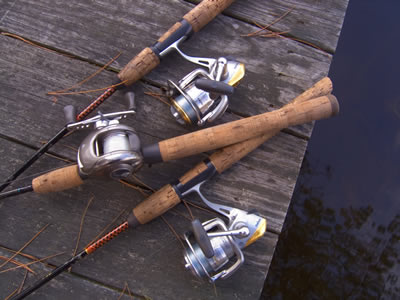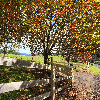|
|
|
|
Ripples: The Newsletter of the
Vermont Agency of Natural Resources |
Greener Design, Cleaner Communities |
October 2012 |
|
| photo credit: Susan Bulmer |
|
1
Respect. Protect. Enjoy.
1 |
|
|
|
|
Reader's Poll:
You may have noticed a new look and feel to our newsletter. Over the coming months we will be reviewing and revising content as well. As a part of this process, we want to hear from you! What stories, topics or information are you interested in hearing about? If you have suggestions please share them with us at:
|
|
 From the Secretary's Desk: Here Comes The Rain Again From the Secretary's Desk: Here Comes The Rain Again
After a summer of nearly constant outdoor activity, I love the rainy days of fall. The rain gives me an excuse to get to those projects I put off, and to enjoy a good book by the fire. And all Vermonters depend on rain water to replenish the lakes, streams and underground aquifers that feed our community water systems and wells.
Although we welcome the wet weather, the rain also brings challenges that come with stormwater runoff. Have you ever noticed a stream of water running down the road while it's raining? Since coming to work for the Agency of Natural Resources I've begun to notice the places in my own community where stormwater runoff is a problem. When I see this, I find myself wondering what's in that water, and how it will impact the river, stream or lake to which it's headed.
As water washes over paved or otherwise 'impervious' surfaces, it carries with it whatever else is in its path. This often includes dirt that contains nutrients like phosphorous and nitrogen, chemicals from motor vehicles, salt, sand and silt, and garbage that has been discarded improperly. Not surprisingly, one of the most significant causes of pollution in our rivers and lakes is stormwater runoff. Traditional engineered approaches to clean stormwater before it reaches our waterways have been challenging and costly to implement. For that reason the Agency of Natural Resources has kicked off a project to promote and implement innovative, green infrastructure approaches to stormwater management.
Green infrastructure are systems that mimic natural processes that reduce the amount and slow down the flow of stormwater so that it can seep into the ground, rather than run off into ditches and brooks that will ultimately wash pollution into our rivers, lakes and ponds. Green infrastructure practices include changing how we put in curbs so that water washes into green spaces rather than keeping it on pavement, putting in rain gardens (green spaces designed to catch water with native water-loving plants), porous pavements, green roofs, trees and planters designed to catch and hold water during storm events, and rain water harvesting (for example, rain barrels).
When we use green infrastructure techniques to manage stormwater and reduce water pollution we see many additional benefits to the environment and to our communities. Green infrastructure helps prevent flooding and flood damage, it can help us conserve energy by reducing the urban heat effect and can improve air quality by increasing the number of plants and trees that absorb carbon dioxide. It also improves the quality of life in our urban and suburban communities by adding green space for recreation and urban agriculture.
Vermont's Green Infrastructure Initiative began with an executive order signed this past summer by Governor Shumlin. That directive requires all State Agencies to use green infrastructure practices to manage stormwater runoff to minimize pollution on state land, and directs the Agency of Natural Resources to convene an interagency group to implement this goal. The first meeting of this group will be held later this month. In addition, the agency received a quarter million dollar US Forest Service grant which will be used to encourage municipalities to implement green infrastructure practices by offering technical and financial help.
To learn more about how you can use green infrastructure practices in your home or community, visit www.vtwaterquality.org/stormwater/htm/sw_green_infrastructure.htm. Next summer, install a rain garden or rain barrel at your home and reduce the amount of stormwater runoff leaving your property. Together, we can protect and preserve our natural resources for this and future generations. |
|
 Raising Fish While Lowering Energy Use
Both the Ed Weed and Bald Hill Fish Culture Stations have completed significant projects to reduce their energy consumption and carbon footprint. In 2010, funding provided by the State Resource Management Revolving Fund was used to purchase and install a recirculating aquaculture system at the Ed Weed Fish Culture Station. Recirculating the water reduces the amount of propane needed to heat incoming water to the appropriate temperature to produce landlocked Atlantic salmon. In its first year, the system saved 15,000 gallons of propane ($22,000) and in the second 20,000 gallons ($29,000). The system has also reduced facility electrical cost between $2-$3000 each year.
Bald Hill Fish Culture Station currently heats nearly 5 million gallons of water annually during fish rearing operatons. By installing a sophisticated heat recovery system, the hatchery has been able to recover at least 56% of the heat in the used fish rearing water, and is estimated to save 19,600 gallons of oil over the life cycle of the system. As a result, the hatchery is expected to reduce its annual greenhouse gas emissions by 26,500 pounds of CO2, 90,900 pounds of Sulfur Dioxide and 26,000 pounds of NoX and other pollutants.
|
 | | Photo credit: Tell Gregory |
The Waterless Resource Saver
The Vermont Department of Forests, Parks and Recreation balances public access and use of shared public resources with protection of the same. In the case of one location, Vermont State Parks has struck that balance through a unique partnership and innovative green design. At Green River Reservoir State Park in Hyde Park, construction was recently completed on two new toilet structures that combine the use of waterless composting, solar power and a structure built from largely locally-sourced materials.
The "Green Mountain Privy" is a design of Cushman Design Group of Stowe, Vermont and was selected as the winning entry from a competition sponsored by the Vermont Wood Manufacturers Association to promote the sustainable use of local wood products. This structure focused on the use of local materials or materials that could be recycled. Where that was not possible materials were selected that would stay in service as long as possible to reduce consumption over the life of the structure.
The construction at Green River was assisted by the Friends of Green River Reservoir and minimized impact to the local environment. Solar panels were elevated above the tree line on utility poles to preserve the tree canopy. The system includes a prepackaged composting toilet base designed and manufactured by Clivus Multrum. Installation reduces frequent pumping required by portable toilets and treats human waste within the structure.
The new Privy is a perfect fit for Green River Reservoir, which was recently featured as one of the ten greenest parks in the U.S. by Mother Nature Network. Vermont State Parks are proud to have the opportunity to showcase these and other green initiatives. |
 City Sets Out to Grow Big Trees Downtown to Reduce Stormwater Runoff City Sets Out to Grow Big Trees Downtown to Reduce Stormwater Runoff
The City of St. Albans is undertaking an ambitious streetscape project in the heart of the business district. The project's scope includes everything from new lighting and benches, improved accessibility and signage, to innovative ways of managing stormwater - including growing large trees. When it comes to providing ecological services, including stormwater management, tree size does matter. According to the USDA Forest Service, a 30-inch tree produces 70 times the ecological services of a 3-inch tree. The difficulty is where we often need trees to maximize these services, the growing conditions are harsh and impervious - similar to Main Street in St. Albans. To gain the benefits of large trees downtown, the City is working with the Department of Forests, Parks and Recreation to employ green infrastructure solutions. Plans call for increasing soil volumes under the pavement to achieve large, healthy trees and ultimately, the long-term benefits of reduced stormwater runoff and improved water quality. Forty-two trees will be planted. To learn more about using trees in green infrastructure practices, view the following FPR publications: Forests, Trees and Water, Trees and Stormwater; and Main Streets to Green Streets. |
|
|
|
Upcoming Events:
Annual Autumn Turtle Nesting Beach Work Day
Saturday 10/13 10am-3pm
Join VT Fish & Wildlife Biologist Steve Parren and others for a work day, as he prepares stretches of beach at North Hero State Park and sites in Swanton for the turtle egg-laying season next June.
For More Information: http://www.vtfishandwildlife.com/calendaritems/Turtle%20clean-up.pdf
The Heights Management Unit Public Meeting Monday 10/15 6:30pm-8:30pm
Public meeting to solicit input on proposed management strategies and public uses for The Heights Management Unit. The Heights Management Unit consists of Calendar Brook WMA, Holbrook State Park, and Mathewson State Forest in the towns of Sheffield, Sutton, and Wheelock.
For More Information: http://www.vtfpr.org/lands/pubinput.cfm
Moose Season Begins Saturday 10/20
Baitfish Regulations Hearings Mon, Tues, Wed 10/22-10/24
The proposed amendments are intended to minimize risk associated with the use and movement of baitfish while allowing anglers more flexibility with the species they can use as bait and how and where they can transport them.
For More Information: http://www.vtfishandwildlife.com/Detail.cfm?Agency__ID=2086
Halloween Wildlife Festival and Jack-O' Lantern Hike Saturday 10/27 5pm-8pm
Come and join the Halloween fun at the Kehoe Education Center! Wear your costume and walk along the jack-o' lantern lit trail, watch an interpretive program around the campfire, create spooky wildlife crafts, and get your photo taken. This event is free and all ages are welcome!
For More Information: http://www.vtfishandwildlife.com/calendaritems/Kehoe_Halloween_Festival_Flyer_2012.pdf
|
|
Contact:
Deb Markowitz, Secretary
Vermont Agency of Natural Resources
802-241-3600 |
|
|
|
|